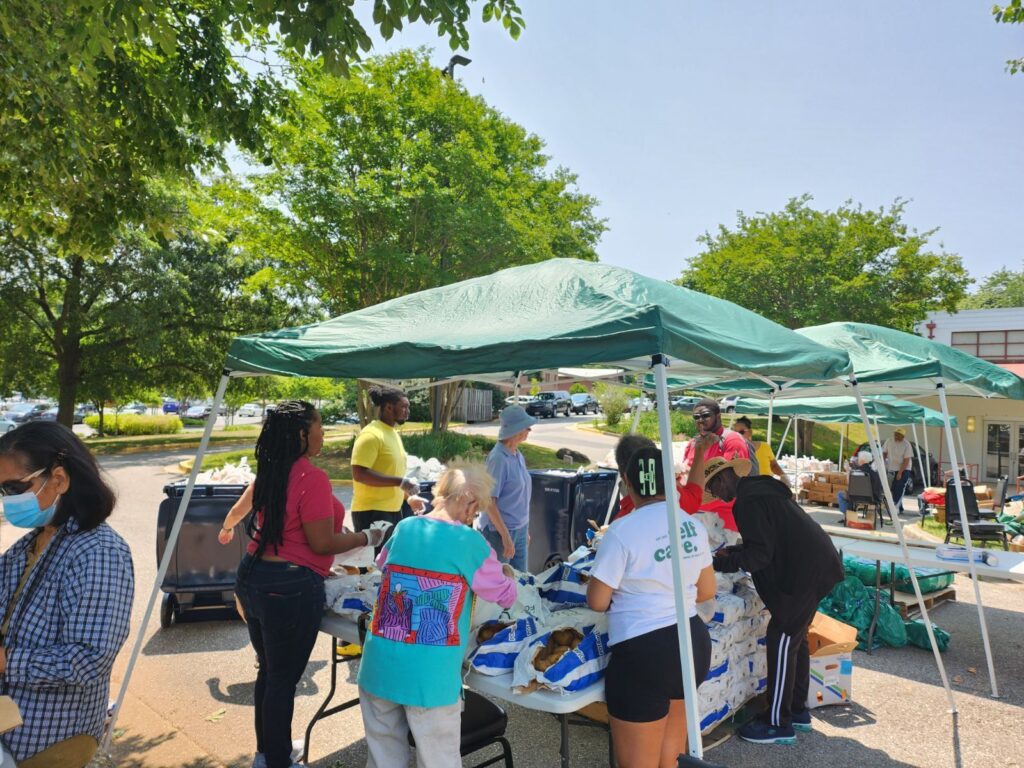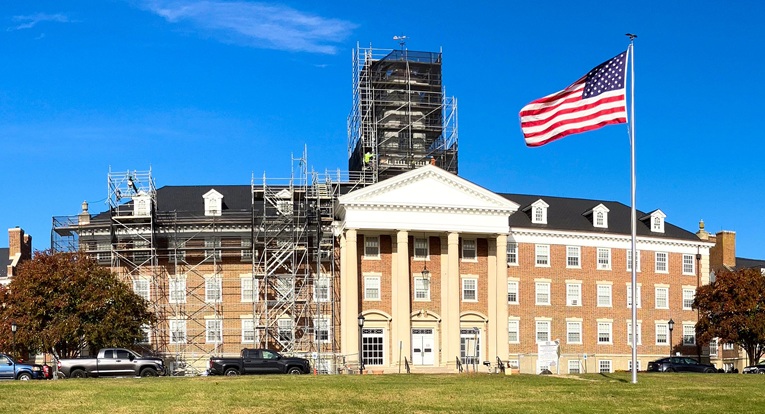Last week, the News Review reported on sources of supplemental food available in Greenbelt for those whose budgets don’t reach far enough. Since then, a worrisome development threatens to curtail the city’s large monthly food distribution program that serves hundreds of individuals and draws residents to the Community Center and Franklin Park, and is delivered to Green Ridge House every third Thursday. At the Community Center, a line of cars usually wraps around the parking lot, frequently stretching to Crescent and Southway. The Capital Area Food Bank (CAFB), which provides the fresh produce for the distributions, has informed Greenbelt that the city will be removed from the list of communities receiving monthly guaranteed produce deliveries beginning July 1. At last week’s budget worksession, Mayor Emmett Jordan called the news “extremely alarming.” However, despite the cuts in CAFB support, monthly food distributions by the city will continue.
As reported in the News Review this past November (see November 28, 2024 issue), each month a large refrigerator truck brings produce and frozen food from CAFB to the Greenbelt Assistance in Living (GAIL) office in the Community Center, which is part of the Greenbelt CARES social services program. The food transported to Springhill Lake and Green Ridge House is limited by the amount that can fit into the city van. This delivery also supports those who are unable to leave their homes. It’s a program that’s been ongoing for over 20 years and, in November, Katherine Farzin, GAIL outreach coordinator, told the News Review their program was constantly growing.
CAFB depends on U.S. Department of Agriculture programs supplying healthy food to communities across the country. This spring, those programs have been cut by $1 billion by the Trump administration, and these huge reductions in funding are causing serious strains on the nation’s food banks at a time when the need for food assistance has soared and is expected to rise over the coming year.
The city recently received a letter from CAFB informing it of the difficult decision to remove Greenbelt from their list of monthly guaranteed produce deliveries. Those deliveries typically included two pallets with a total of 3,500 to 4,000 pounds of produce, according to Christal Batey, assistant director of CARES and GAIL. Now that the amount of produce available to CAFB is so much less, they have had to prioritize its distribution to communities that cannot afford to provide other sources of food for their residents, explained Batey.
After June, the city will continue to purchase nonperishable foods for distribution, and a limited amount of fresh produce, subject to availability, will also come from CAFB. The city will not have to pay for that fresh produce but it will have to navigate a challenging new system requiring what produce is available to CAFB to be ordered by the pallet during a specific time window, selecting from among the limited number of pallets. There is a new limit of 2,000 pounds of produce, approximately half of what Greenbelt has been accustomed to, which realistically won’t allow more than one pallet to be ordered. Staff will strive to provide as much as possible, but there is no guarantee of what will be available in a given month, said Batey.
Many Greenbelt households depend on these food resources. In April, 212 households were served, including 517 individuals. One hundred and one households were served out of the GAIL offices in the center of Greenbelt as part of the central drive-up distribution, 50 households received food in Franklin Park, 44 at Green Ridge House and 17 people received food delivered to their homes. Batey will be keeping track of how changes to the economy are reflected in the demand for food assistance.




